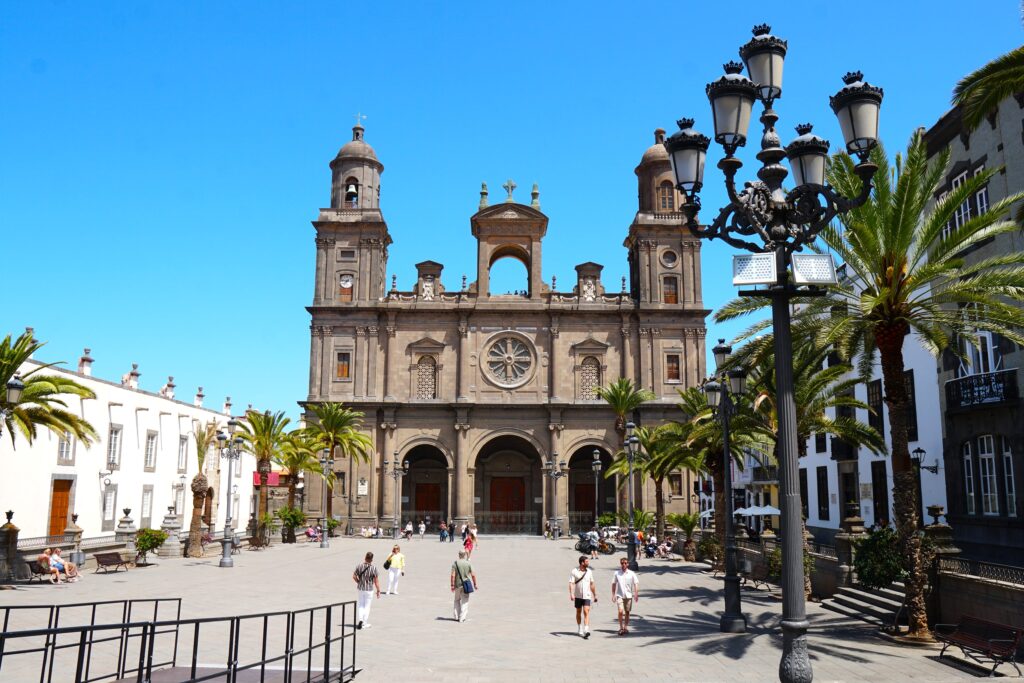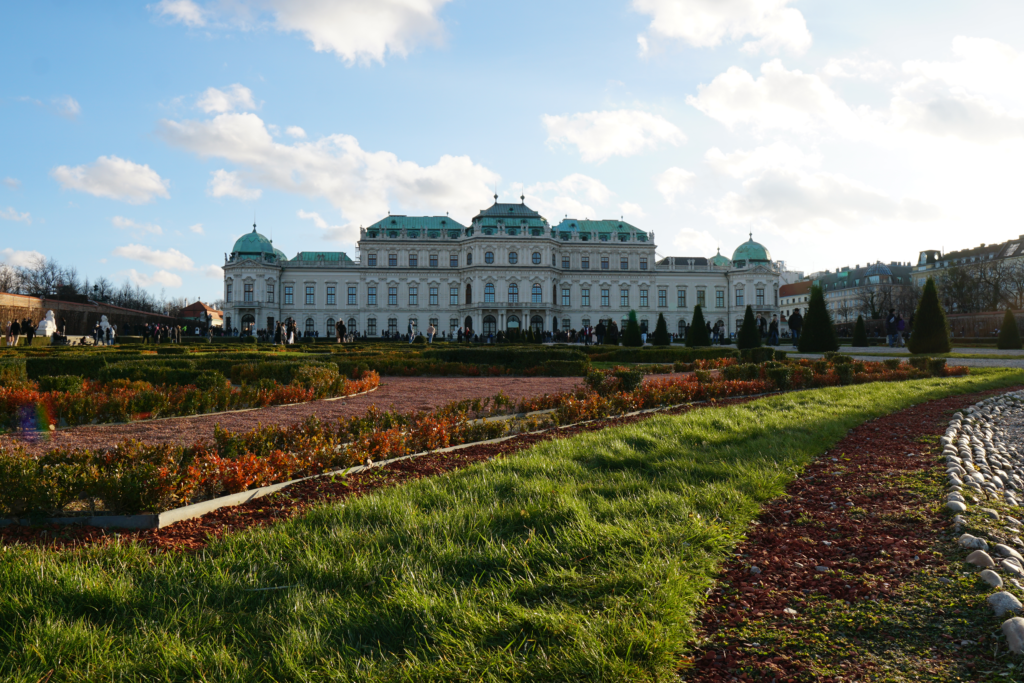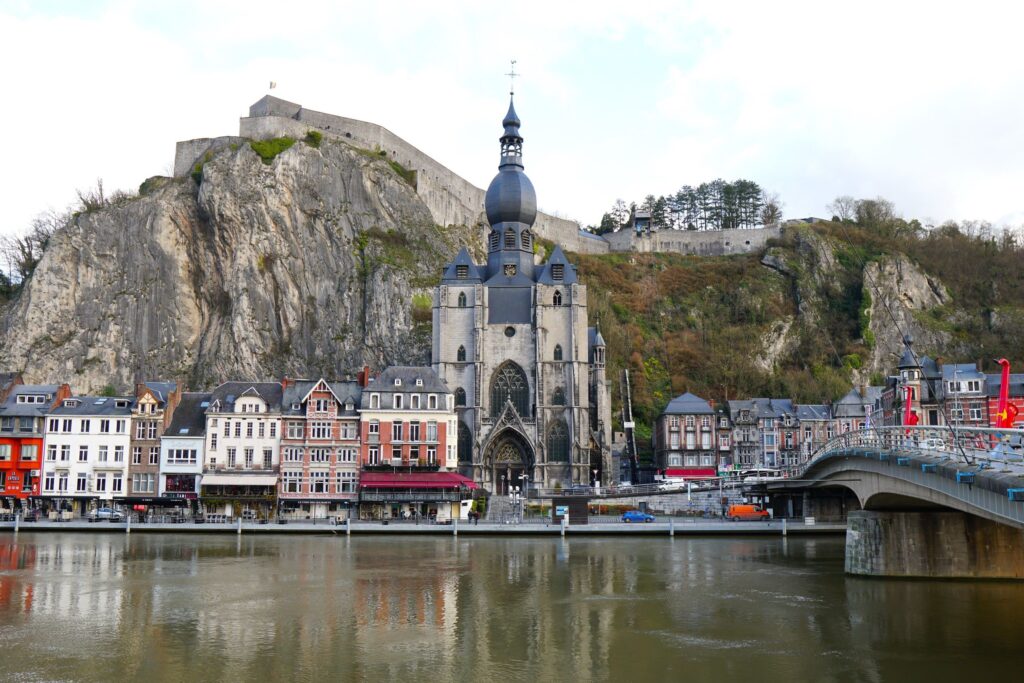We wake up in Dinant to a veil of mist rising from the river, swirling like smoke and casting an ethereal dusk over the Meuse River. In the background, the towering Rocher Bayard stands, its silhouette softened by the morning haze. As the fog begins to lift, the first strokes of blue sky paint the horizon, revealing the town in an almost sacred awakening.
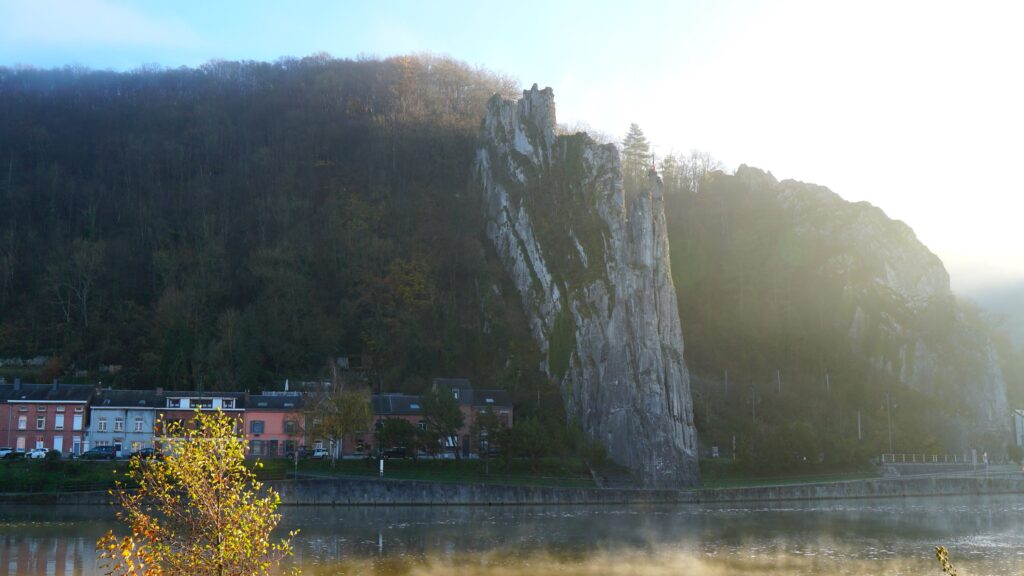
Our first stop was the Grotte de Dinant La Merveilleuse or “The Marvelous Cave of Dinant.” Discovered in 1904, this cave is a natural wonder sculpted by water over millennia.
As we step inside, the cool, damp air envelops us, and the soft sound of dripping water echoes through the chambers. Over thousands of years, water has seeped through the limestone above, dissolving minerals and carrying them into the cave. As the water drips, it leaves behind tiny deposits of calcium carbonate, which slowly build up into the stunning formations we see today.
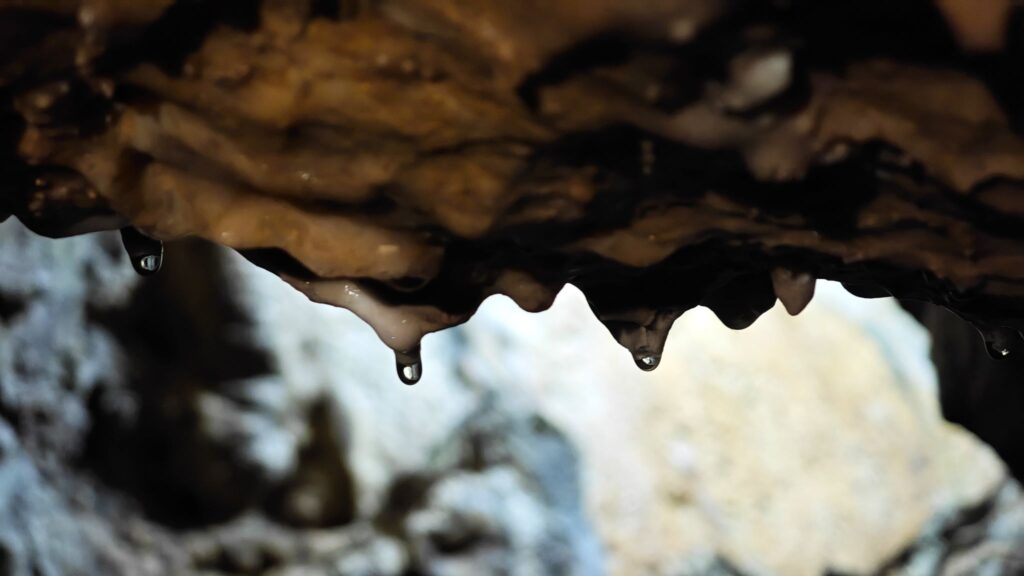
The sheer variety of shapes and sizes are just impressive. From the ceiling, stalactites hang like frozen icicles, their pointed tips glistening with moisture.
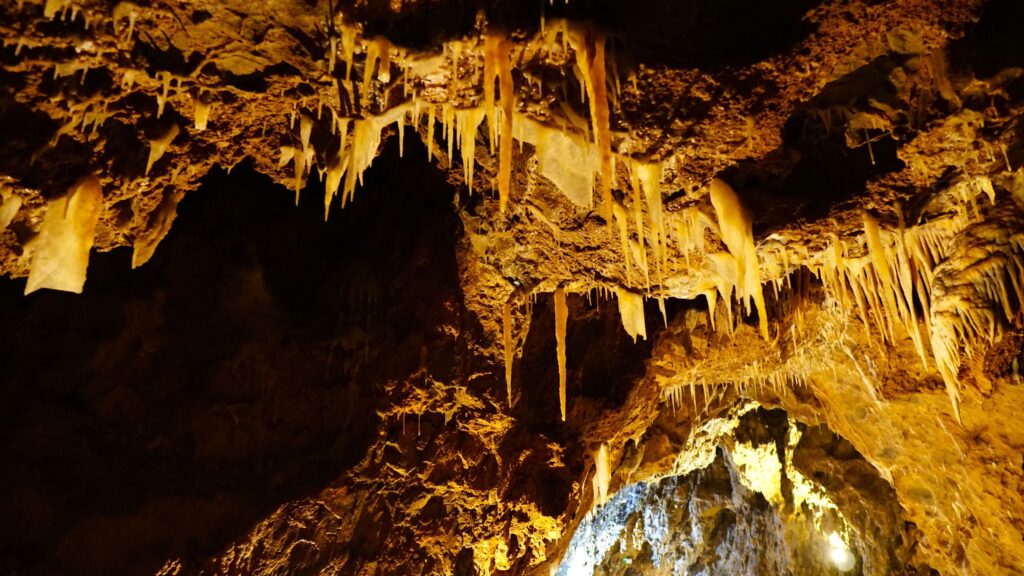
On the ground, stalagmites rose like ancient stones, some smooth and rounded, others jagged and wild. The guide explains that these formations grow at an incredibly slow pace—just a few centimeters every century. Some of the stalactites and stalagmites are so long and delicate, it feels like they defy gravity.
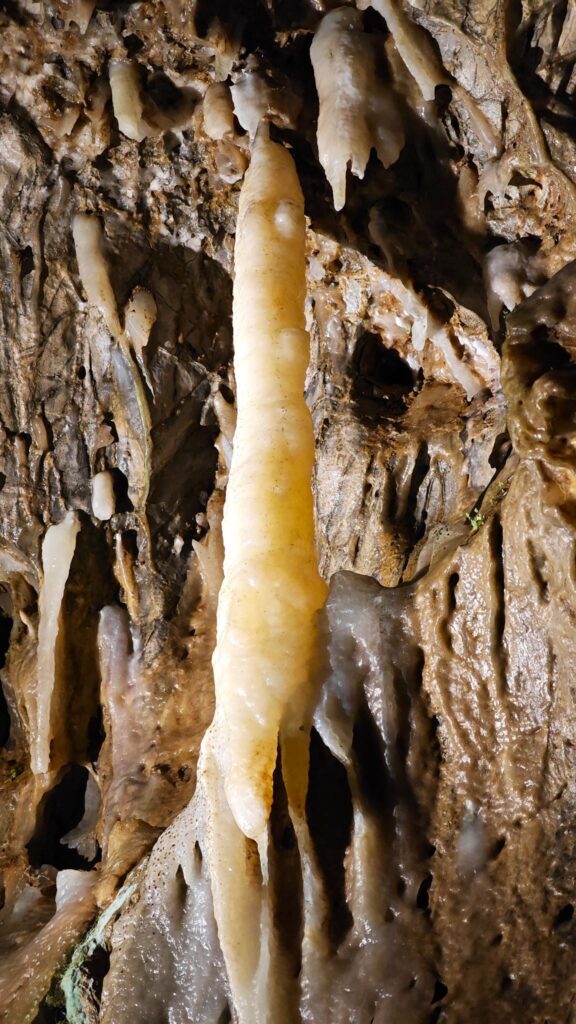
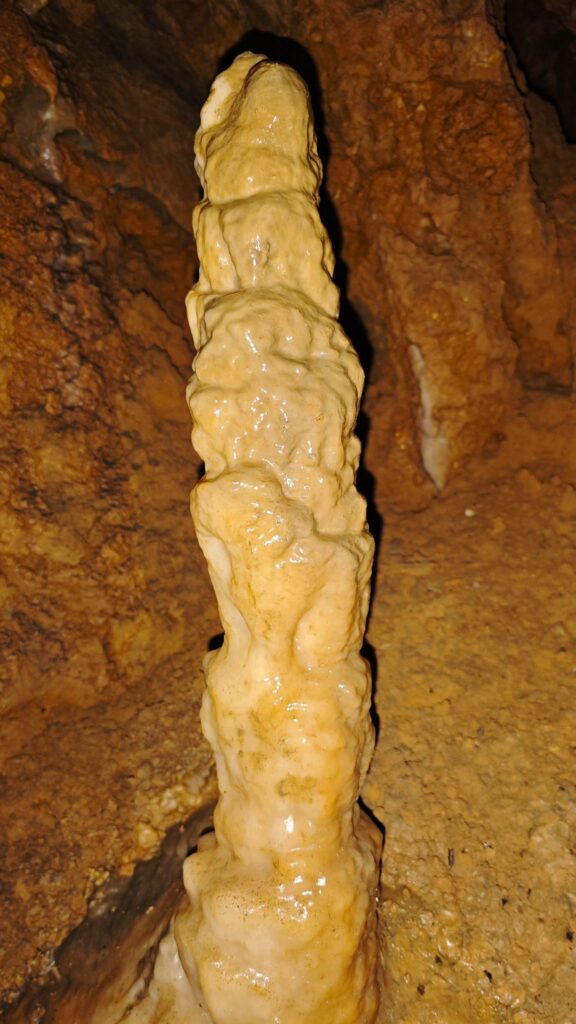
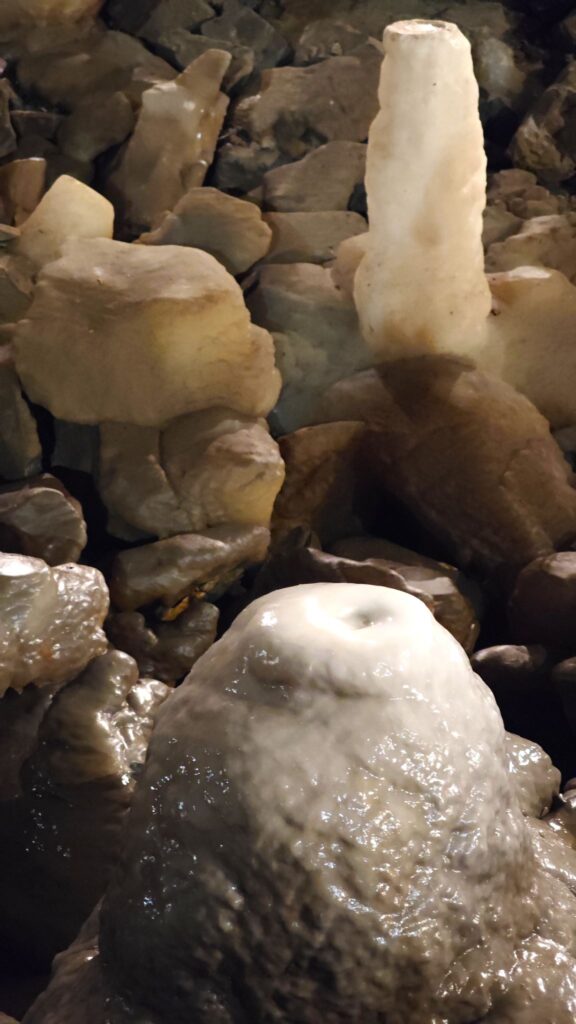
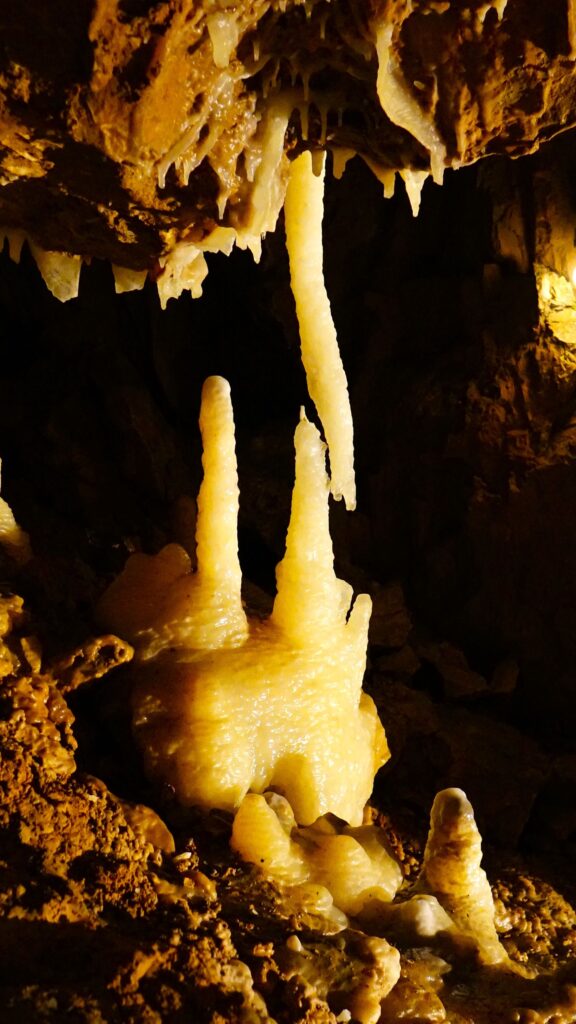
One of the most iconic sights in the cave is the “almost-touching” pair—a stalactite and stalagmite reaching towards each other, separated by just a sliver of space.
This formation, often called a “kissing couple,” is a favorite among visitors.
As we go deeper, we are greeted by many stone waterfalls. This incredible formation looks like a frozen cascade, its rippled surface giving the illusion of flowing water.
The guide explains that this is created by water flowing over the rock surface, leaving behind layers of mineral deposits that harden into stone. It was surreal to see something so fluid and dynamic captured in solid rock.
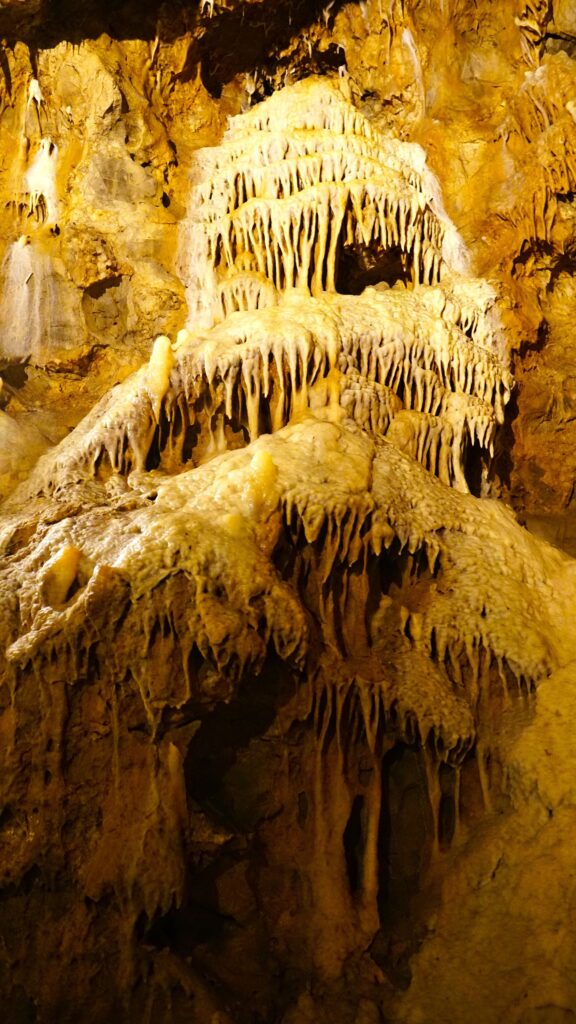
The cave’s formations often have a yellowish tint, which we learned comes from traces of iron and other minerals in the water. Some of the formations are still wet, their surfaces glistening in the dim light. These liquid-like appearances are due to the ongoing process of mineral deposition—water continues to flow, adding new layers and keeping the formations alive.
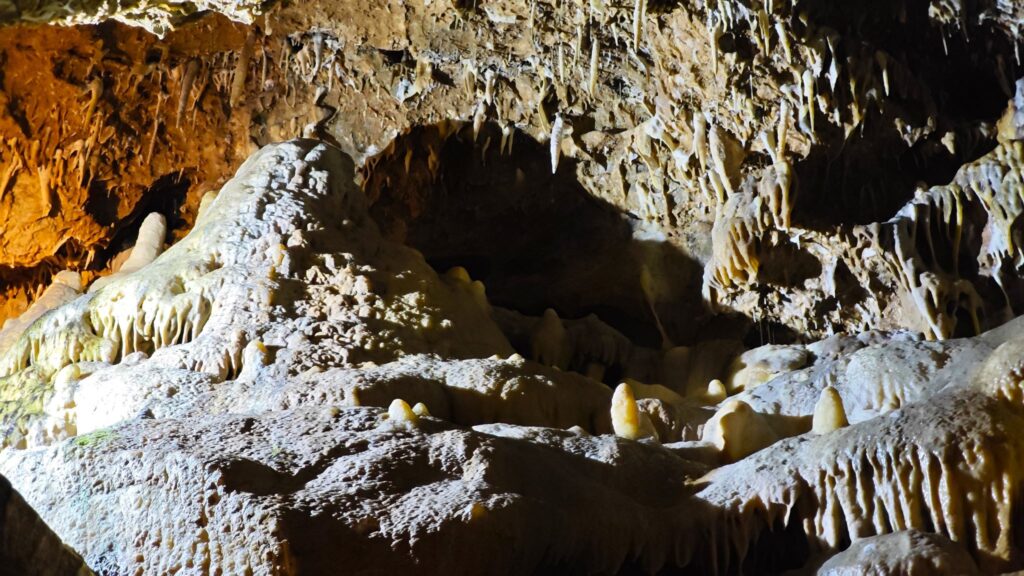
In some areas, we notice patches of green moss or grass. The guide explains that these plants thrive in the moist, nutrient-rich environment, adding a touch of life to the mineral-dominated landscape, where nature is reclaiming its own creation.

As we emerged back into the sunlight, the sky was such a dazzling shade of blue – a perfect weather for visiting castles and enjoying a leisurely hike.
Belgium is in fact often called the land of castles, with over 3,000 scattered across its landscape. These grand fortresses are remnants of the country’s feudal past, when noble families built strongholds to defend their lands.
On our trip, we visited Walzin Castle and Vêves Castle.
Perched dramatically on a cliffside overlooking the Lesse River and surrounded by a sea of greenery and the sparkling river below, Walzin Castle is a sight straight out of a fairy tale.
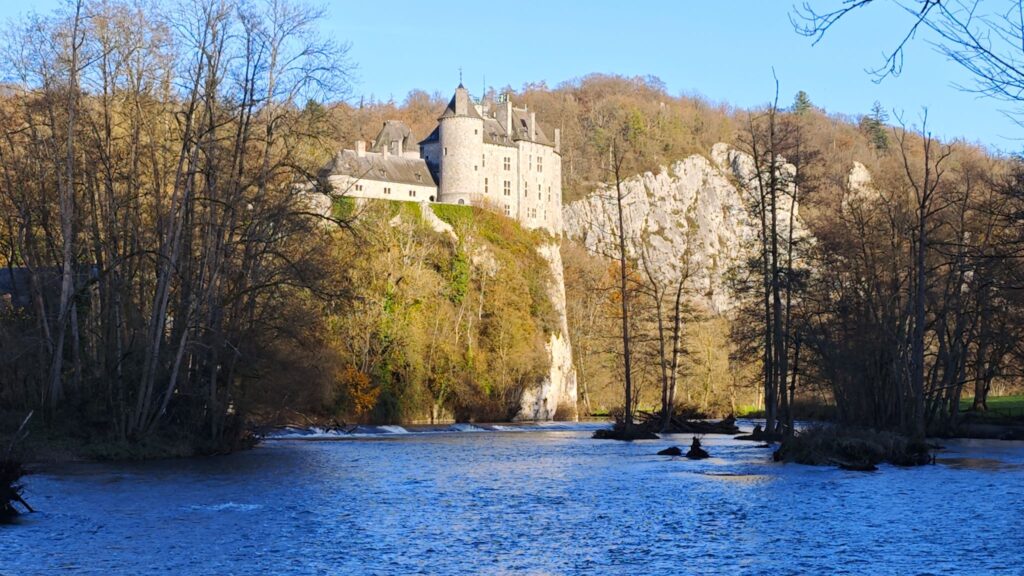
The castle itself is privately owned and not open to the public for interior visits. The best way to experience Walzin Castle is to take one of the hiking trails that wind around the area. A walk through these trails, lasting around 1.5 to 2 hours, offers different views of the castle.
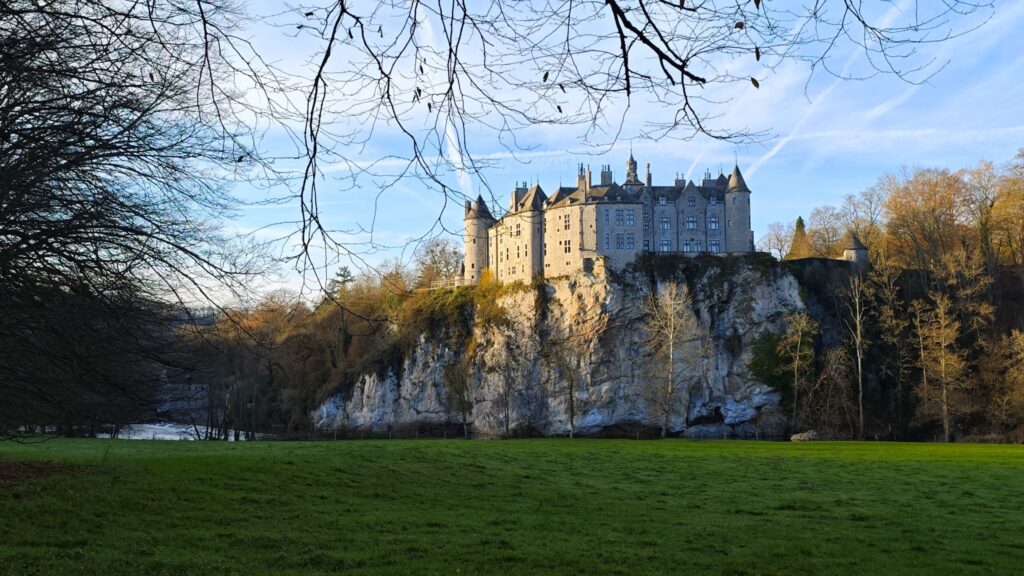
The path leads through peaceful woodlands, open meadows, and along the riverbank, where the cliffside, river, and sky weave together a scene of absolute marvel.
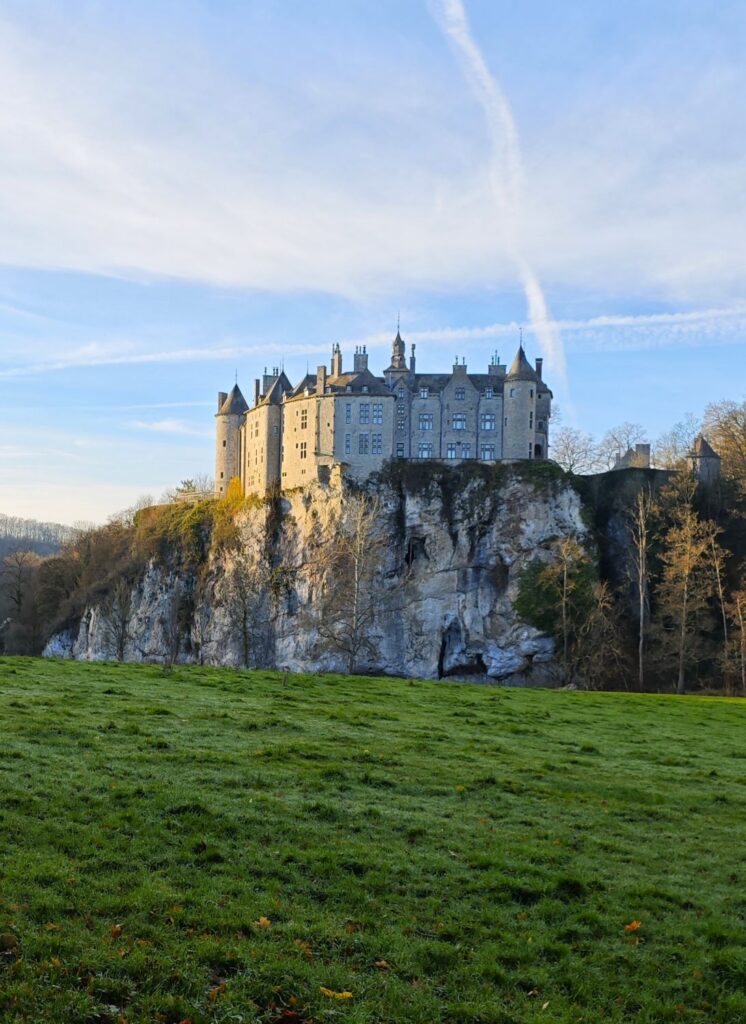
Next, we made our way to Vêves Castle, a quintessential castle with its pointed towers, elegant architecture, and idyllic setting.
Unlike Walzin, Vêves Castle is open to the public for guided tours, usually from April to October.
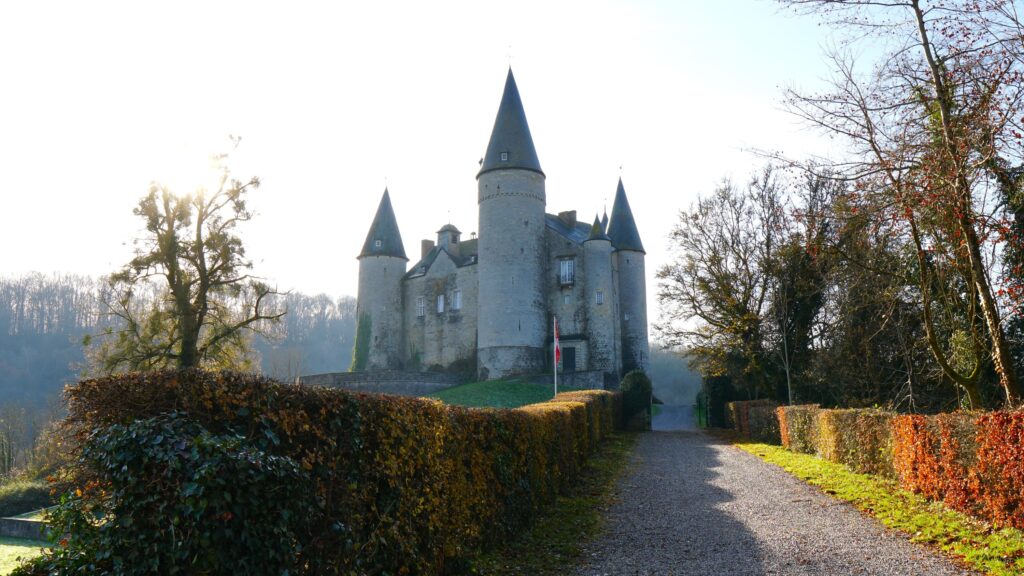
As we were out of its open season, we took a short peaceful stroll around its enchanting exterior. Surrounded by manicured gardens and framed by rolling hills, it’s easy to see why this castle is often called one of the most beautiful in Belgium.
As the day waned, we found ourselves once again before Rocher Bayard. Up close, this so-called ‘secret stone’ of Belgium appeared even more formidable, bathed in the fiery glow of the setting sun.
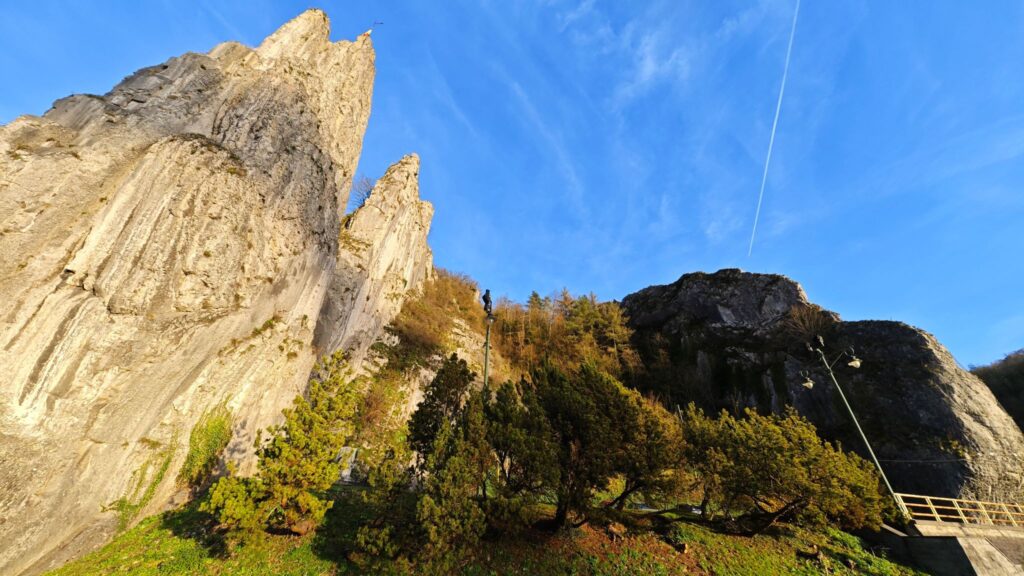
Local folklore has it that the rock was split by the hooves of Bayard, a magical giant horse from the medieval epic The Four Sons of Aymon.
The story goes that the four brothers, fleeing from the wrath of Charlemagne, rode Bayard as they escaped through the region. In a moment of desperation, the horse leaped from a cliff, striking the rock with such force that it split in two, leaving a space just enough for a single car to pass through.
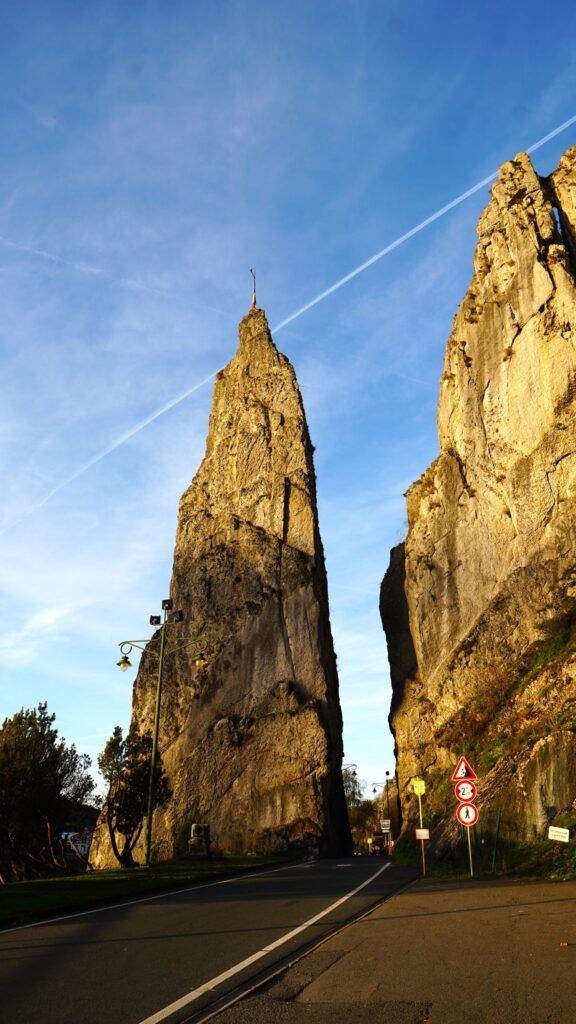
More tips for your visit:
- Visit Order: From Grotte de Dinant, visit Walzin Castle first (closer), then Vêves Castle.
- Driving Time: Grotte de Dinant → Walzin Castle (~10 min), Walzin Castle → Vêves Castle (~15 min).
- Time Needed:
- Grotte de Dinant: ~1 – 1.5 hour.
- Walzin Castle: ~1.5-2 hours (hiking and viewpoints, as it’s not open for visits).
- Vêves Castle: ~1-1.5 hours (tour inside and walking around).
Back in Dinant, we picked a cozy restaurant called Le Wiertz to try some authentic Belgian specialties. Naturally, we had to go for mussels (moules)—one of Belgium’s most famous dishes. Thanks to the country’s North Sea coast, Belgian mussels are incredibly fresh, plump, and full of flavor, often cooked in a fragrant white wine or beer broth that makes them irresistibly delicious.
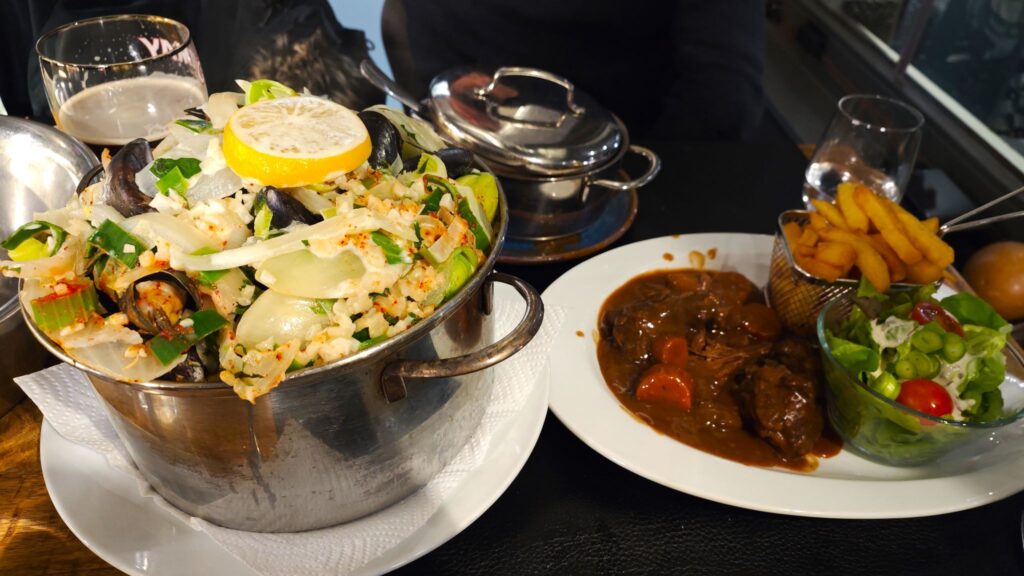
Before diving into our meal, we started with a glass of Chimay Bleue, a classic Belgian Trappist beer. The first sip greets us with a bold bitterness, yet it was surprisingly refreshing. Unlike lighter beers, Chimay Bleue carries deep, complex flavors—notes of dark fruit, caramel, and subtle spices blend within, giving it a rich and slightly warming finish. The creamy texture and malty sweetness balance out its hoppy bitterness.
Originally brewed as a Christmas beer in 1956, it quickly became a favorite, now enjoyed year-round. With an alcohol content of 9%, it has a smooth yet powerful presence, perfect for pairing with hearty Belgian dishes.
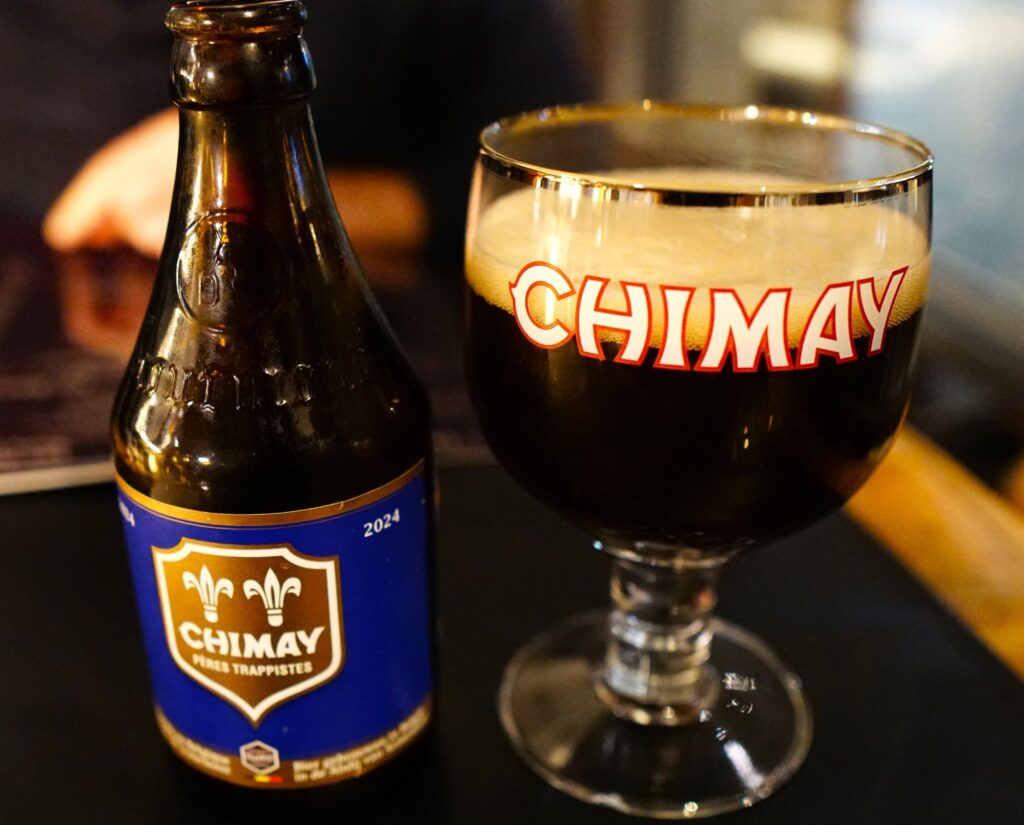
For our starter, we chose Duo of Cheese and Shrimp Croquettes, a Belgian classic that combines golden crispness with rich, indulgent flavors.
It’s served with a handful of fried parsley, a wedge of lime, a few cherry tomatoes, green onions, Parmesan cheese, and tiny North Sea grey shrimps (crevettes grises)—a Belgian delicacy known for their briny, slightly sweet taste.
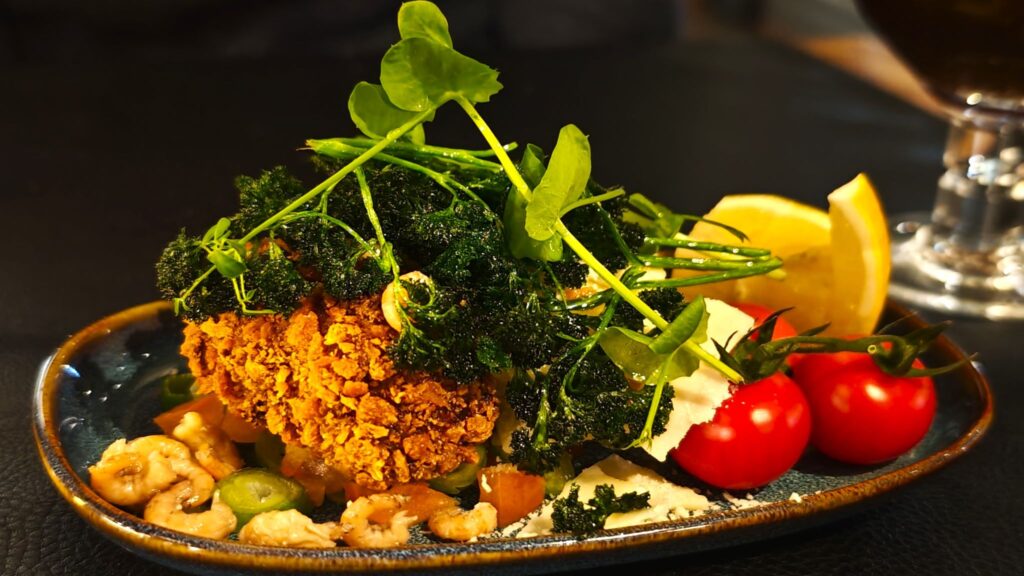
The croquettes arrive hot, their super crunchy breadcrumb coating giving way to a lusciously smooth, velvety filling. The croquette is incredibly creamy, with a rich, nutty depth from the Parmesan. The shrimp imparts a fresh sweetness with an umami punch that’s perfectly balanced by the creamy béchamel base.
The fried parsley is light, crunchy, and slightly salty, enhancing each bite with herbal freshness. A squeeze of lime adds a citrusy contrast, rounding off the richness of the croquettes.
Boeuf Bourguignon is a taste of French comfort with a Belgian touch. This slow-cooked beef stew, originating from the Burgundy region of France, is known for its deep, rich flavors and melt-in-the-mouth meat. It’s served with salad and crispy fries, which adds a Belgian flair.
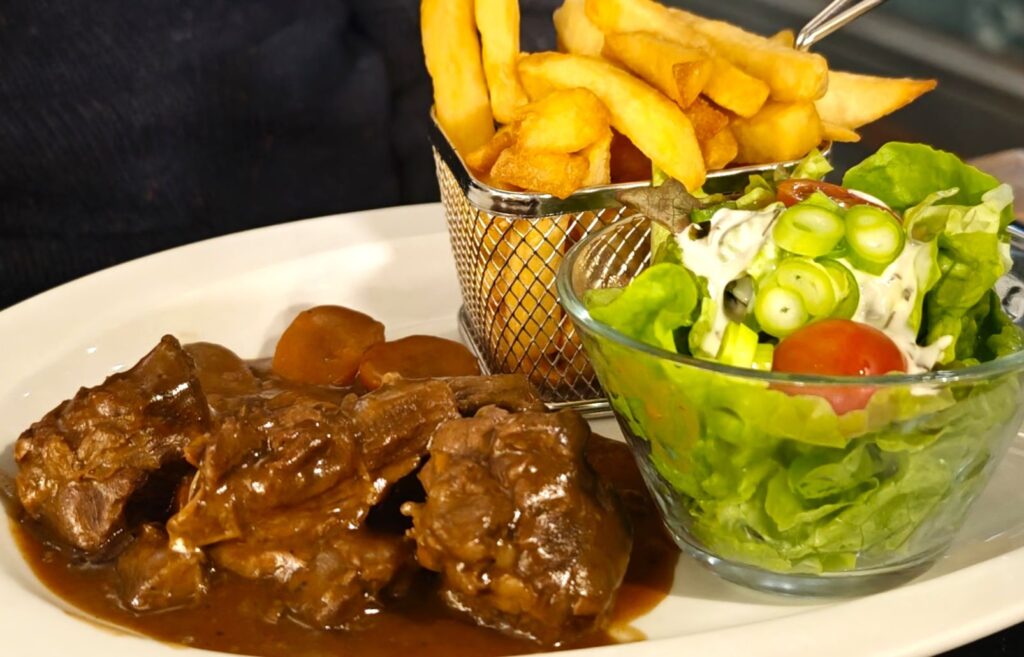
The sauce of the stew, made with red wine, gives it a deep, velvety richness, complemented by aromatic spices. The hint of cinnamon brings warmth and a subtle sweetness that enhances the natural savory flavor of the beef. Each piece of meat is impossibly tender and buttery—so soft it almost melts on the tongue, requiring barely any effort to chew.
The long-braised garlic cloves and carrots infuse the dish with a mellow sweetness, while the earthy mushrooms, soaked in the wine-infused sauce, deliver bursts of umami juiciness in every bite.
Few dishes capture the spirit of Belgian cuisine quite like a steaming pot of mussels. Served in a huge, seemingly bottomless pot of 1.4 kg mussels, Nos Moules Copere – a national dish of Belgium – feels like an ocean of mussels, an indulgent seafood feast that never ends.
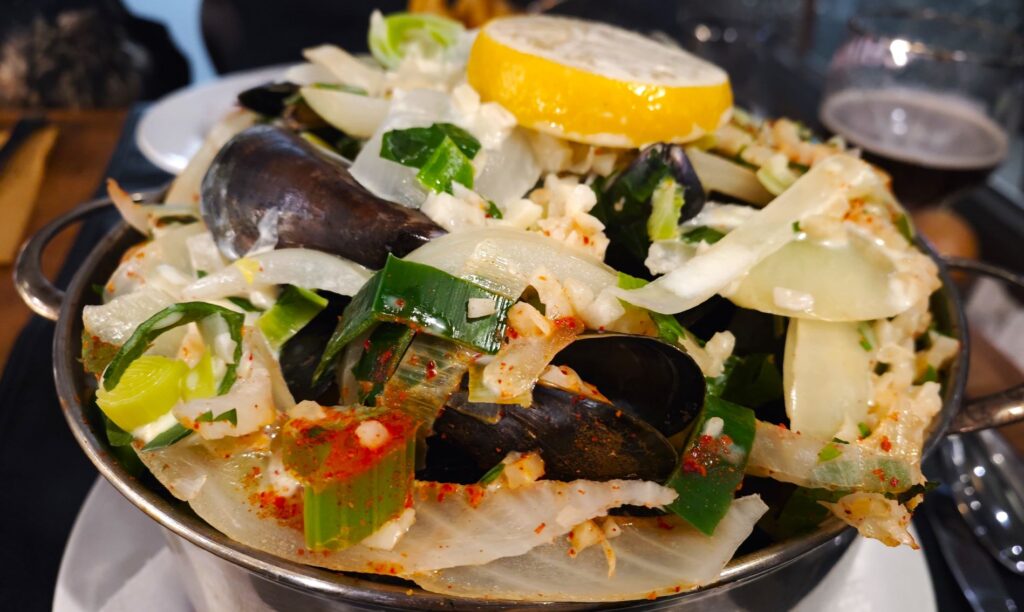
As soon as it arrives at the table, the bold aroma of garlic fills the air, mingling with the briny scent of the sea. The sauce, made with white wine and cream, has a distinct leek-forward flavor, layered with the delicate sweetness of celery and onions. A generous dusting of spicy powder on top adds a welcome kick, elevating the dish beyond the classic moules marinières.
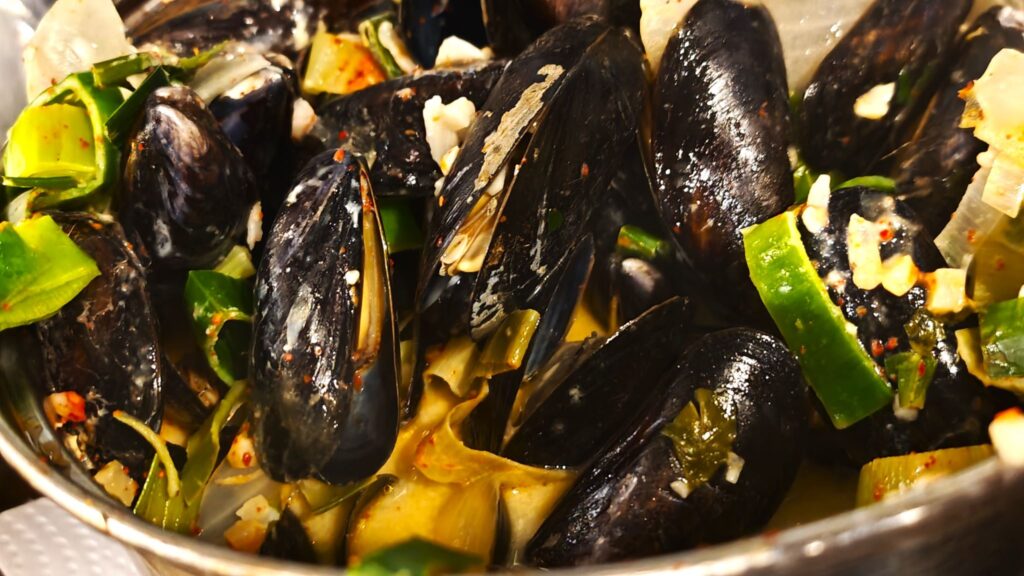
The mussels themselves are gigantic, plump, and incredibly fresh, with a texture so tender they practically slide out of their shells. Each bite is a divine balance of briny, buttery, slightly sweet, and umami-rich flavors.
Paired with a spoonful of the warm, herbal, and subtly tangy white wine sauce, it’s an explosion of depth and richness.
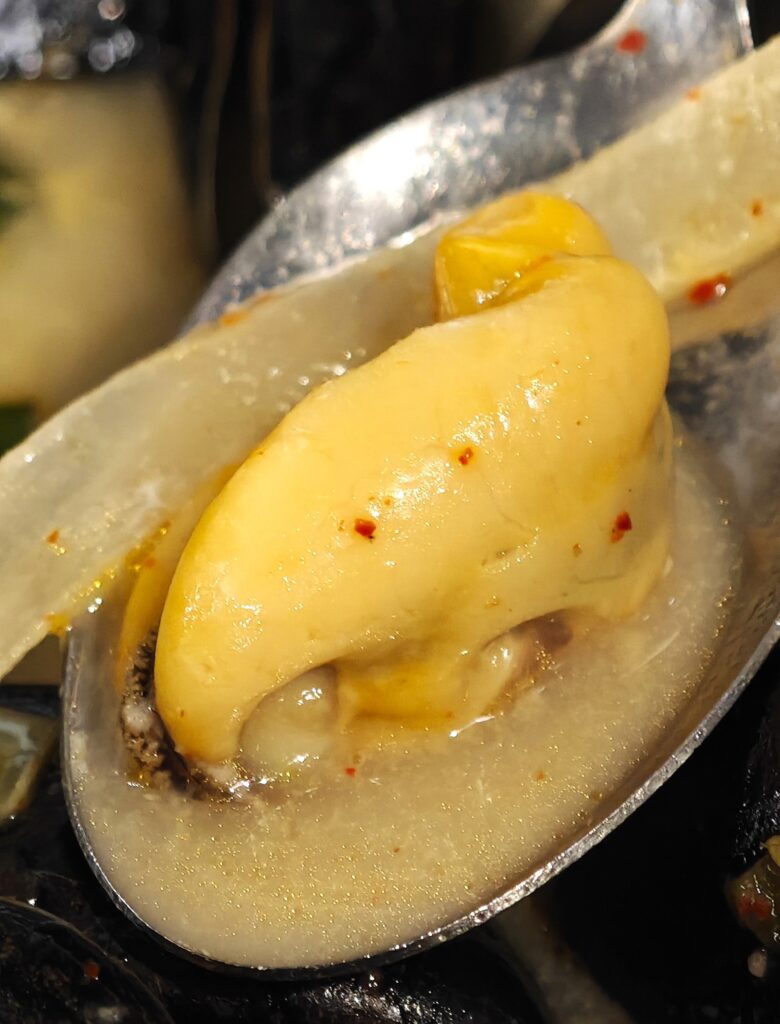
Unlike smaller mussels found elsewhere, Belgian mussels are exceptionally large and meaty, thanks to the cold, nutrient-rich waters of the North Sea. Some are so massive they can fill an entire spoon, offering a plump, juicy bite that bursts with pure seafood flavor.
And then, there’s the sheer abundance—a pot so big that each scoop reveals even more, endless waves of flavor. This dish is, without a doubt, the highlight of our entire Belgium trip—food-wise.
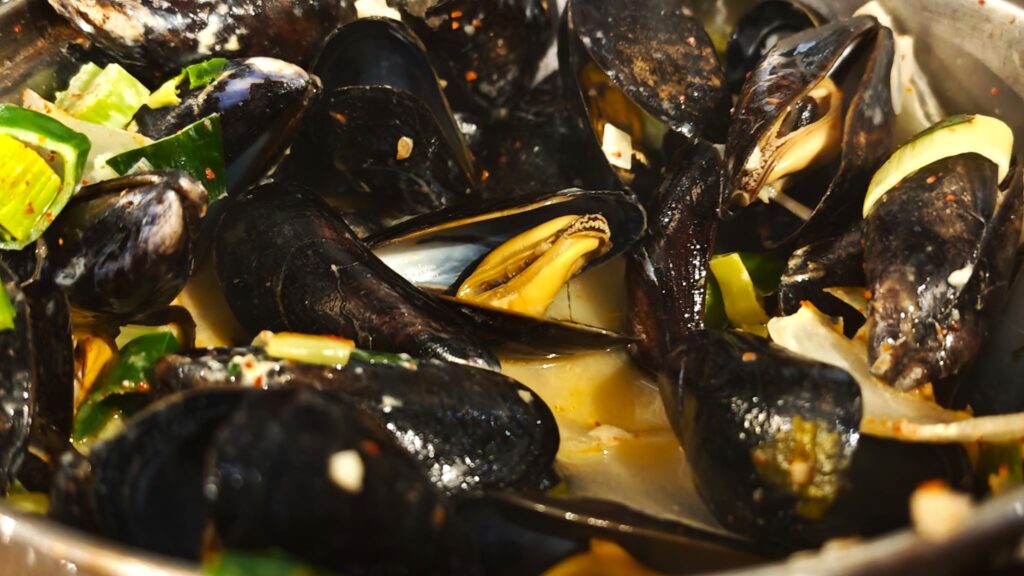
After such a feast, we were already quite full—but for a sweet Belgian finale, we tried the Coupe Speculoos.
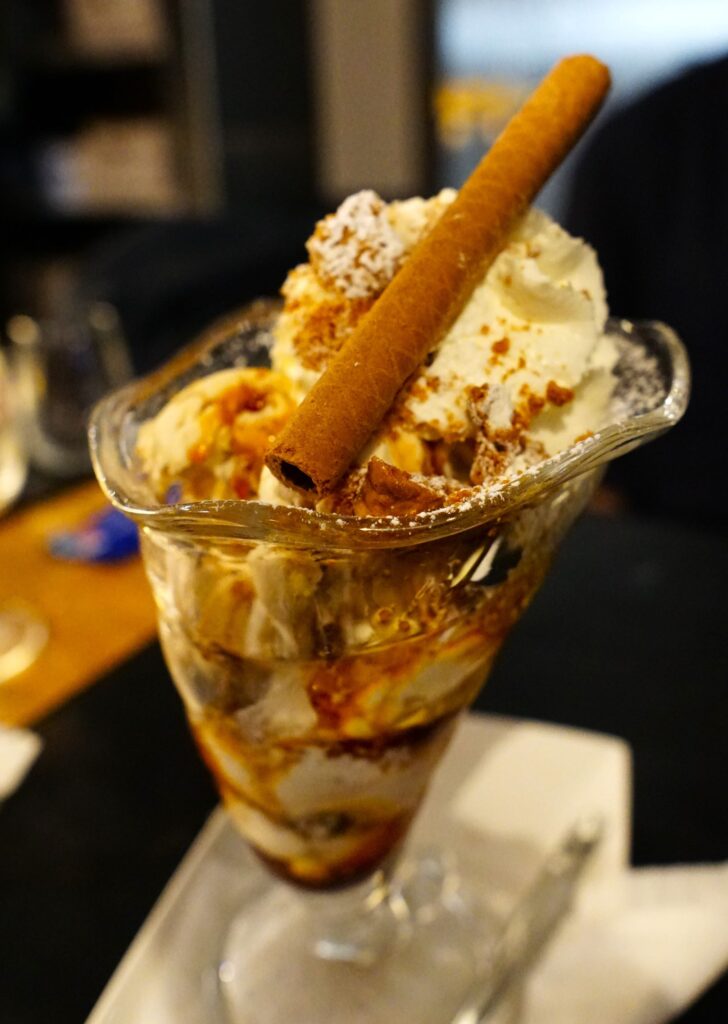
This dessert is a beautifully layered, combining the deeply spiced, caramelized crunch of speculoos biscuits – a Belgian specialty – with cool, velvety ice cream and a generous swirl of whipped cream. It’s creamy, crunchy, and silky all at once.
The flavor is a mix of warmth and sweetness. The signature speculoos spice blend—cinnamon, nutmeg, ginger, and cloves—imparts a cozy, nostalgic warmth, reminiscent of the holidays, while the ice cream adds a cool, milky balance.
During this meal, a little surprise made it even more memorable—a cat hopped onto my chair, curled up beside me, and dozed off. Maybe it was the comforting aroma of the food or the cozy atmosphere of the restaurant. This furry guest snoozed peacefully at my waist the entire time, its soft warmth against my side. It was the sweetest moment of that evening.
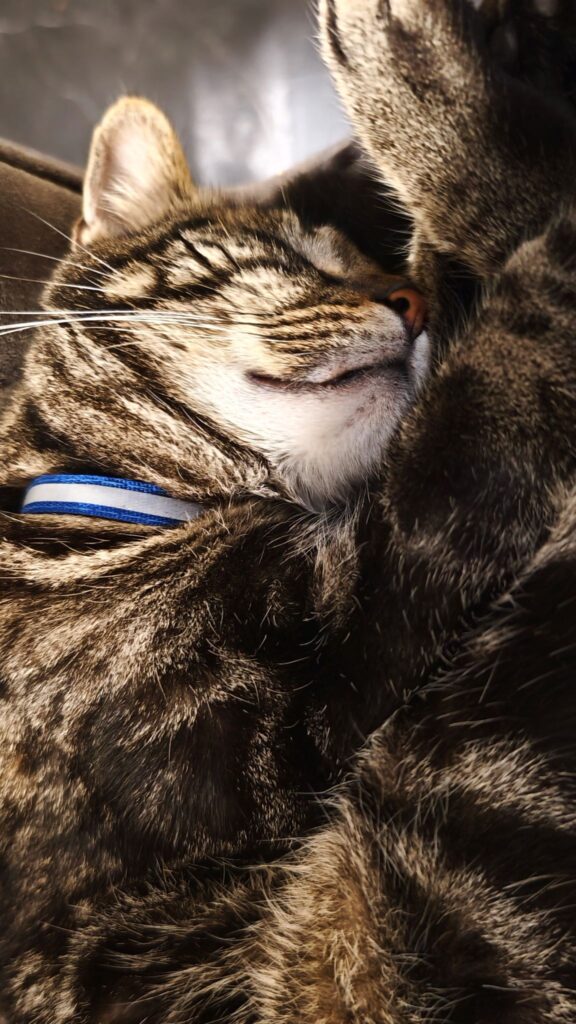
Hope you’ve enjoyed this ride with us. Next stop: La Roche-en-Ardenne, where medieval ruins, stunning water town, and more Belgian flavors await. Stay tuned!


